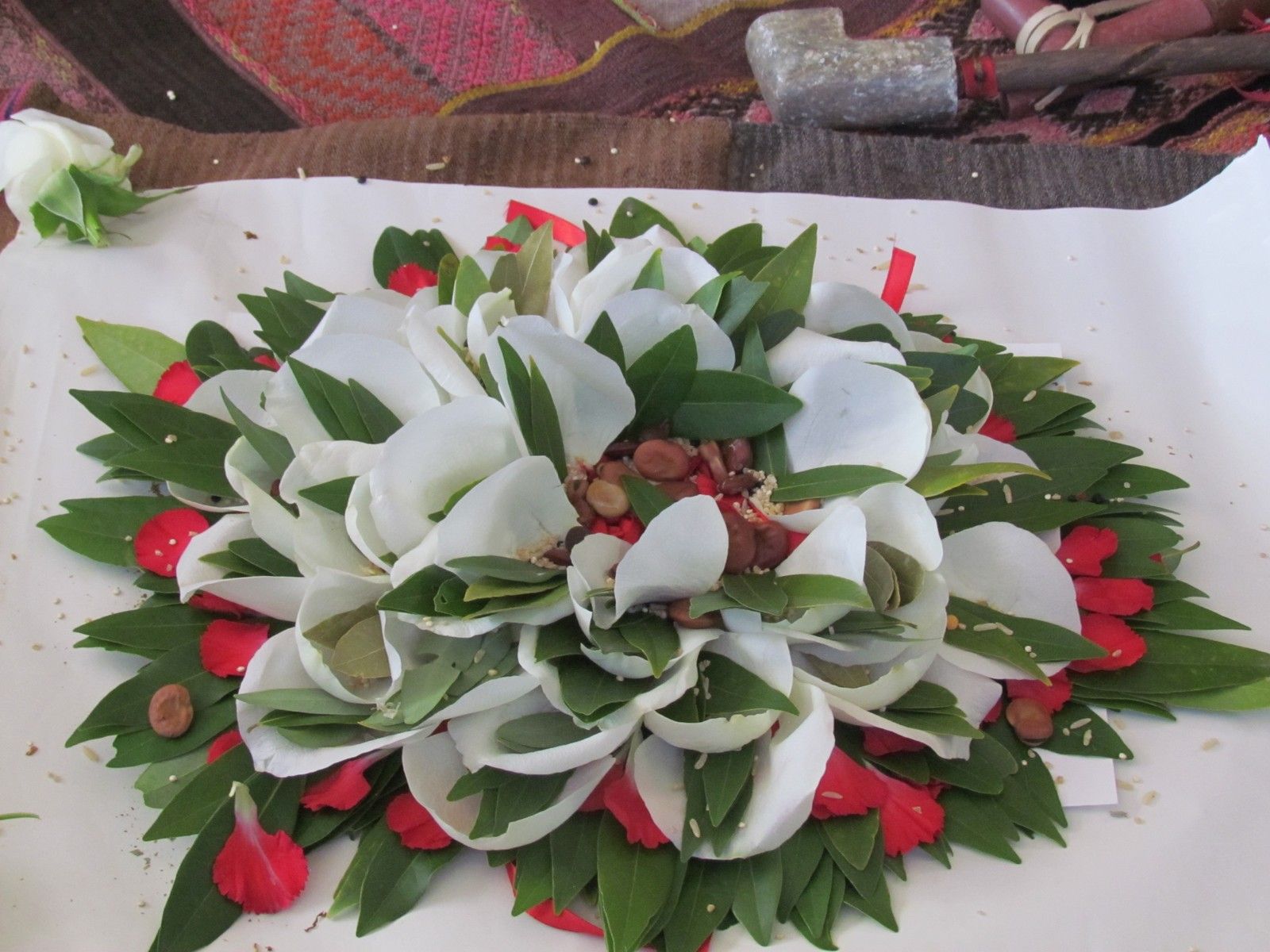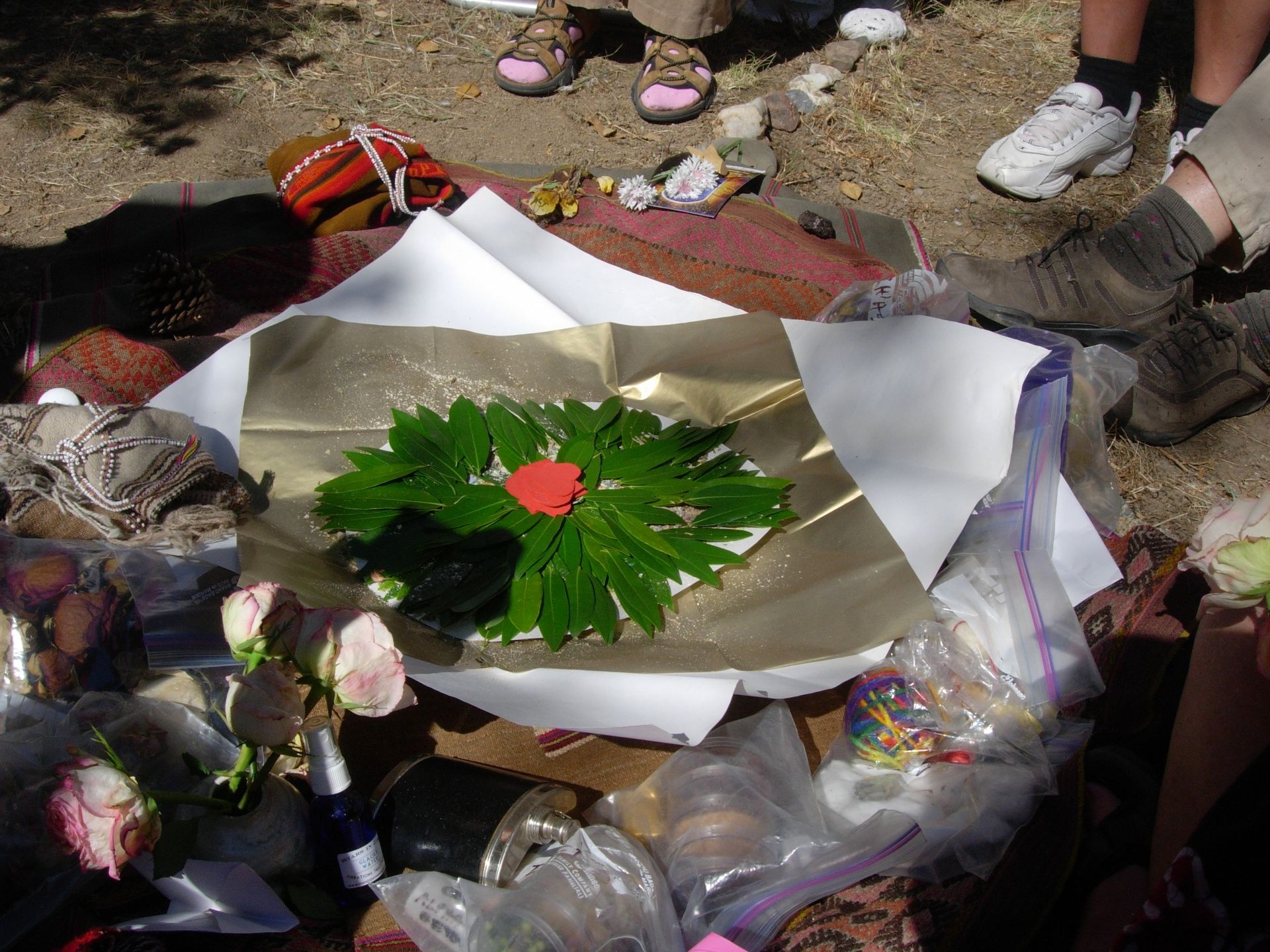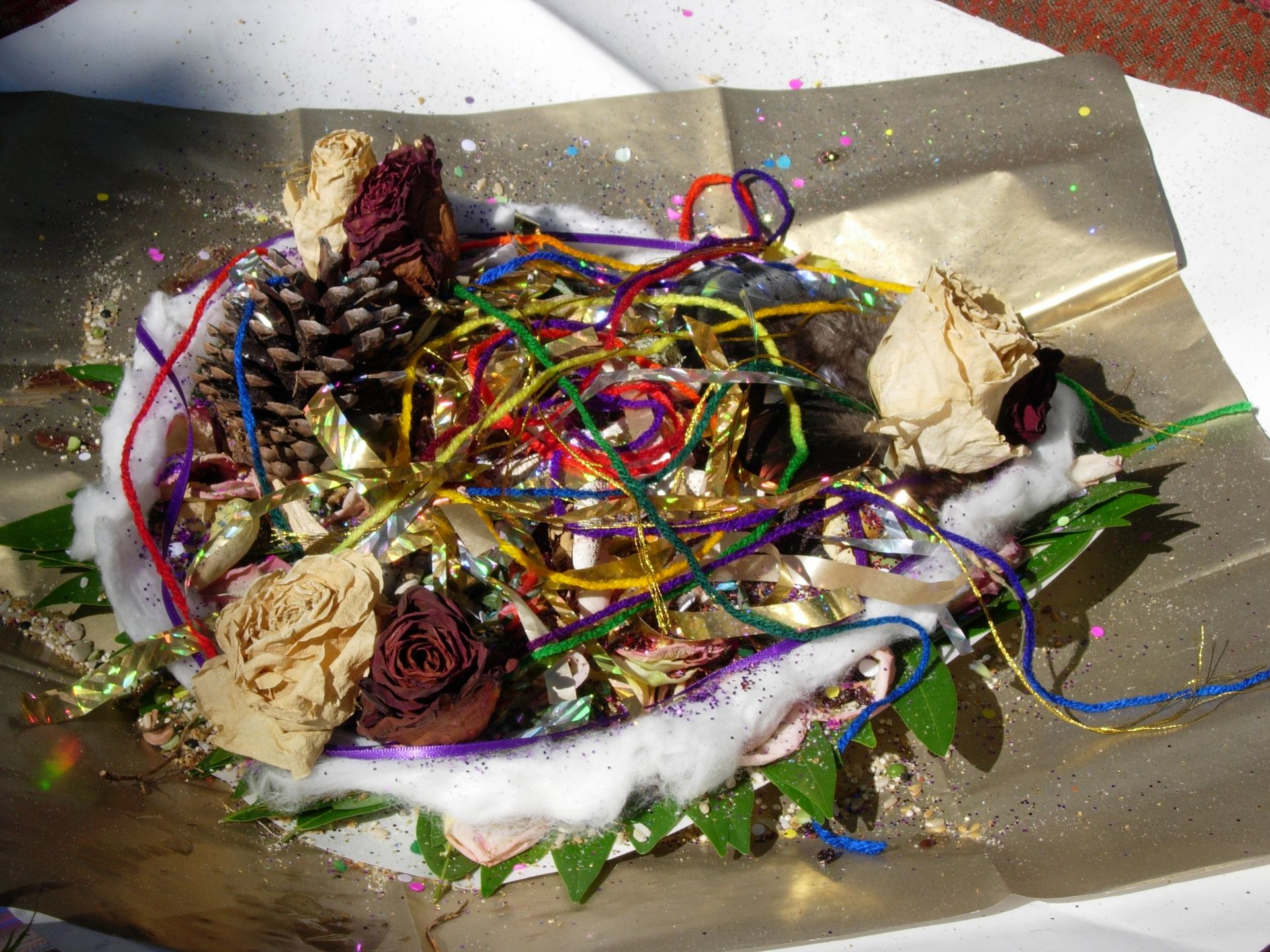CONNECT YOUR ENERGY, TRANSFORM YOUR LIFE!
Be inspired and supported as you learn to engage with earth, air, fire and water, filling with their energy and cultivating your connections. You will learn to move and shift your energy with ease and grace.
Join our list so you can try out this 5-minute, life-changing Elements Meditation.
Your details are safe with us.
Meg Beeler, Shamanic GuideSchedule Appointment
Discover How to Change Your Energy and Shift Your Experience!
Learn a simple, potent practice for shifting your energy.
Replace self-doubt, overthinking, and isolation with vitality and joy.
Learn how with the Elements Meditation, a free, five-minute, and life-changing energy practice.
Creating a Despacho Ceremony
Despacho describes the Andean ceremonial practice of making offerings to the mountains (apus), Mother Earth (Pachamama), and other spirits of nature in reciprocity, reverence, and thanksgiving.
A despacho is an act of love and a reminder of the connections we share with all beings, elements, spirits, and sacred places. At the deepest level, it is an opportunity to enter into the essential unity of all things, the living energy of the universe.
Despachos offer us a vehicle for moving and shifting the energy of a group, the world, and the cosmos.
Note: This is a brief introduction to traditional Andean despachos, called haywarisqa in Quechua. It also explains how to create a contemporary despacho, drawing on Andean ways and bridging those cultural practices with intent. Come to the next despacho in SF Bay Area.
Celebrate Life!
A despacho is created during a celebratory ceremony. In the cosmology of the Andes, all life is perceived as one grand, infinite ceremony. Because physical survival is so hard in the high mountains, life is experienced as a true gift to be lived, not a problem to be solved.
There are at least 300 variations of despachos in the Quechua-speaking Andes (primarily Peru and Ecuador). While there are certain elements common to all despachos, the particular healing intention—such as bringing harmony and balance to the earth, honoring new beginnings, or getting rid of an illness—determines the design of the offering, some of the contents, and even the way that offerings are added.
The ceremony brings participants into alignment:
- With their personal intent, the group intent, and gratitude to the earth, which supports us in all our endeavors.
- With the "three bands:" physical (yankay), feeling and heart (munay), and spirit, or energetic wisdom (yachay). (The alignment of these bands is comparable to alignment of the seven chakras or the fifteen chakras of other cultural frameworks.)
- With the community, through the sharing of coca leaves and gifts of stones, all of which strengthen the luminous fibers that connect us all.
Traditional Despachos
A traditional despacho is created by medicine people (paqos) who work in alignment and with their spiritual connections.
As the ceremony begins, red wine and white liquor (pisco) are offered to the spirits of the mountains and to Mother Earth. The medicine persons and all the participants feed each other coca leaves—the sacred plant of the Andes—into which their intent and prayers have been blown. These gifts are a sign of community and strengthen connections.
The offering is created on Andean weavings that represent the masculine and feminine in balance (mastana and uncuna).
White paper, for clarity, is placed on the weavings for a base.
A bed of incense is laid, to carry the prayers of the offering into the cosmos.
Flower petals (red for Pachamama, white for mountains) are laid in a sacred geometric pattern, commonly in a circle, four directions, cross, or flower pattern, depending on the intent.
Sets of coca leaves, called kintus, are prepared with intent by each participant, then collected by the medicine people and placed in a pattern on the offering, again reflecting the particular intent.
After the initial "bed" is created, some or all of the following symbolic representations are prayed over, offered up, and added: fruits of the earth (seeds, raisins, grains, nuts, corn, quinoa); sweets (wrapped candy, sugar); representations of the sea (a shell) and the stars (a starfish, the five-legged star of return, unfolding into the Fifth world); silver and gold papers representing threads to the earth and the cosmos; confetti; miniature tin figures of animals, people, and tools; beads; llama fat from while llamas (symbolizing the sun); a baby llama fetus (representing that which is unborn or not yet manifested); white cotton (for the clouds that surround the mountains and bring rain); many-colored wool (for the rainbow bridge into the cosmos); condor feathers; and so on.
A despacho contains symbols of everything: elements, weather, clouds around mountains, rainbows, the four directions, lakes, rivers, fruits of our labors, earth, stars. Every item represents a part of the Andean animist cosmology, is imbued with intent for connection to the mountains and the cosmos, and affects the totality of energy in the universe.
When the offering is complete, the bundle is folded, tied, and wrapped in sacred weavings. The paqo (medicine person) circles the group with the despacho bundle, cleansing the luminous bodies of each participant to remove any heavy energy, and blessing everyone. These heavy energies, or hucha, become part of the offering, as the earth eats heavy energy and composts it.
Finally, the offering is burned. Participants do not watch the offering burning, so Apuchin (the old condor) can come to eat any remaining hucha, and because watching might hold back some of the filaments being sent into the cosmos.
Q'ero Elder Don Manuel Q'espi, in a presentation at Canyon de Chelley in May 1997 (translated by Jose Luis Herrera), spoke of despachos this way:
"The despacho is a gift—a giving back of what we receive everyday in our lives. We seek, through the despacho ceremony, to bridge the ordinary and non-ordinary realms; to establish new patterns of relationship and possibility. The despacho places us in right relationship, right ayni, with the Pachamama. It establishes a linkage between our three centers of interaction in the kaypacha (the physical universe); our llankay (our personal power and source of action, located in our solar plexus), our munay (the source of our love, located in our heart chakra), and our yachay (wisdom, sourced from our foreheads or "third eye").
"The contents of the despacho are in part determined by its purpose. The various elements that comprise the despacho energetically interact to permit access to portals or bridges from the ordinary and non-ordinary worlds. When working in ceremony with the despacho, one is accessing the non-ordinary energetic dimensions, the source of things. Though the contents may have symbolic significance, the despacho, when performed with the correct intent, transcends literal and symbolic domains and directly accesses the archetypal and energetic realms.
"In order to build a good co-existence with nature, the only real choice we have is to enter with our heart, wisdom, and our action. We call upon the spirits of the waters, of the mountains, and of the Pachamama to come and help us prepare the offering. We have the intent of seeking to establish and maintain a continuous dialogue with the Mother and to bring balance and harmony to our lives, and to all our relations. It is through the dynamics of love, of right thinking, and of right action that our lives become bountiful.
He described several types of despachos in this way:
"The Pachamama despacho is an offering of thanks to Mother Earth and an invocation for her blessings.
"The Apu despacho is an offering to the mountain, which is the provider of the waters. When the mountain glaciers melt they provide the water that feeds the high mountain streams and lagoons. The mountain is the bringer of the weather as well.
"The Chas'ka despacho is an offering to our star, the sun. This despacho is not prepared as often as the offerings to the Pachamama and to the apu. Most of our business has to do with living in this world. Only when very big events (such as a earthquake) are occurring, or whenever an offering is made for the benefit of a great number of people, are Chaska despachos prepared. In this case, the stars as well as Mother Earth and the apu must offer their contribution. For example, in the case of earthquakes or large-scale environmental events which affect larger numbers of peoples, one wishes to bring together the power and the blessings of the earth, the mountain, and the star to bring them into right relationship. This is to help assure that the people go on the right path.
"The Ayni despacho: Ayni is the operating principle in Incan shamanism and refers to 'reciprocity' and divine exchange. The intent of the Ayni despacho is to bring balance in our lives and relationship between our secular and sacred worlds.
"The Aya despacho is performed to aid the luminous body of the dead or dying to step outside of the physical body gracefully. It is said that the spirit of the dead lingers in the vicinity of the physical body for seven days. The medicine person knows when it is necessary to help the luminous body to sever its connection with the physical.
"The Cuti despacho: Cuti literally means 'turning back' or 'shielding off.' It is an offering for protection. This despacho is typically created with the left hand only, and all motions of placing items in the despacho are performed in a counter-clockwise (or unwinding) fashion. The right arm is in 'dreamtime' while the left arm performs the action."
Contemporary Despacho Ceremonies
I have studied with indigenous shamanic teachers and medicine people (in the Andes and elsewhere) for 25 years. I seek to honor the teachings and deep wisdom I have received while at the same time making these ceremonial practices accessible to you in contemporary settings.
My teachers in Peru and Ecuador understand that the cosmology and symbols of their culture are not the same as ours, and want me to share the intent of the despacho. When I bring the experience of and information about the ceremony to various groups, from holistic medical practitioners to hikers learning about their local ecosystems, I translate and bridge the deep cosmological underpinnings of our own offerings and vision into forms that you can use.
As they say in the Andes, it is our intent and focus that create shifts in the energy of the universe.
With this in mind, I create contemporary despachos that honor particular sacred places; that represent our thanks for a connection or teaching; or that offer a gift back to the spirits of the land, the spirit helpers who assist our work, the spirits of the elements and ancestors, and the essential unity of the cosmos.
With this in mind, I create contemporary despachos that honor particular sacred places; that represent our thanks for a connection or teaching; or that offer a gift back to the spirits of the land, the spirit helpers who assist our work, the spirits of the elements and ancestors, and the essential unity of the cosmos.
I may also offer despachos to call and pray for help, as with chas'ka despachos; to release dense energy, as with grief despachos; to help bring balance to a situation, a group, or a place with an ayni despacho; and so on.
While it is possible to bring "kits" from the Andes, or to purchase traditional components of a despacho on the web, it is actually better to work with local items. That way, you reflect on and make a relationship with all the parts of your offering.
Reflecting on the source, energy, and intent put into each component is important. For example, home-grown or organically grown seed and grains carry strong personal and healing energy: why not try to use them? In the Andes much wrapped, sugary candy—special and rare in a culture where nearly everything is home made—is used, whereas in the North, what is more special is the purity of the organic.
On a more practical level, we substitute local leaves for the traditional coco leaves, which are illegal in the north; in California we use bay laurel leaves, which are a similar shape, though not so nutritious.
Finally, offer your despacho to the fire, or bury it if you are on a mountain or other place where a fire is not possible.
Want to sponsor a despacho in your community, or need help making one?I'll be happy to mentor and guide you in creating a despacho offering for your particular intent. Email Meg
Medicinewoman, Shamanic Guide, and Mentor Meg Beelerhelps you heal soul, balance your energy, and empower your spirit path. Drawing on Earth-centered, nature-based, ancient wisdom ways, Meg is passionate about reweaving the connections between all beings. She studied Andean mysticism extensively with the Q’ero in Peru. Meg is the creator of Energy Alchemy™ & founder of Earth Caretakers Wisdom School. Meg is the is author of Weave the Heart of the Universe into Your Life: Aligning with Cosmic Energy and coauthor of Where the World Begins.Meg lives on Sonoma Mountain in the San Francisco Bay Area. She sees clients in person and on Zoom worldwide.
Post Your Comment Below
Discover Shamanism and You...
Shift from density in your life—problems, worry, sadness—into the beauty of connection with all that is. Discover shamanism. Talk to Meg!








